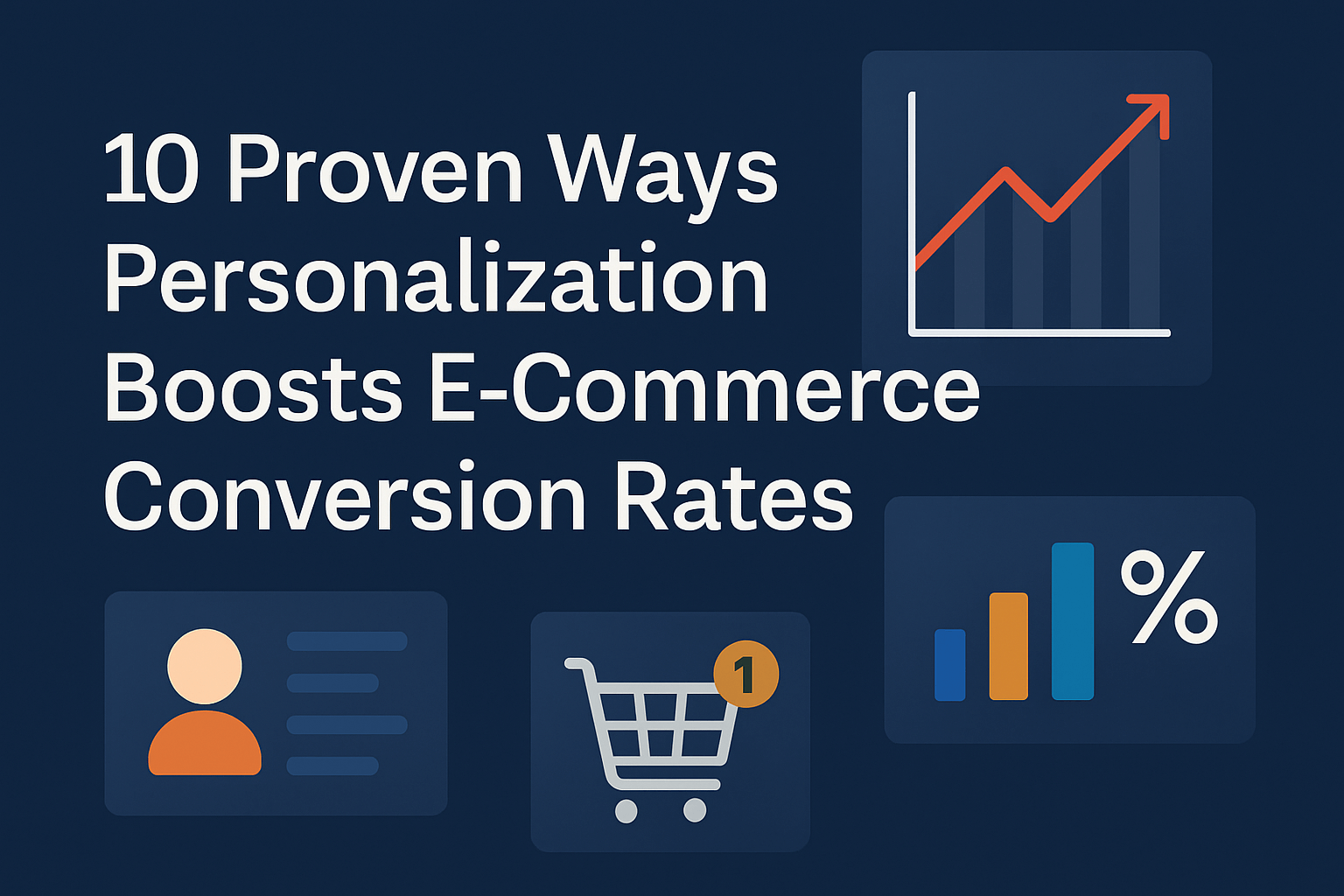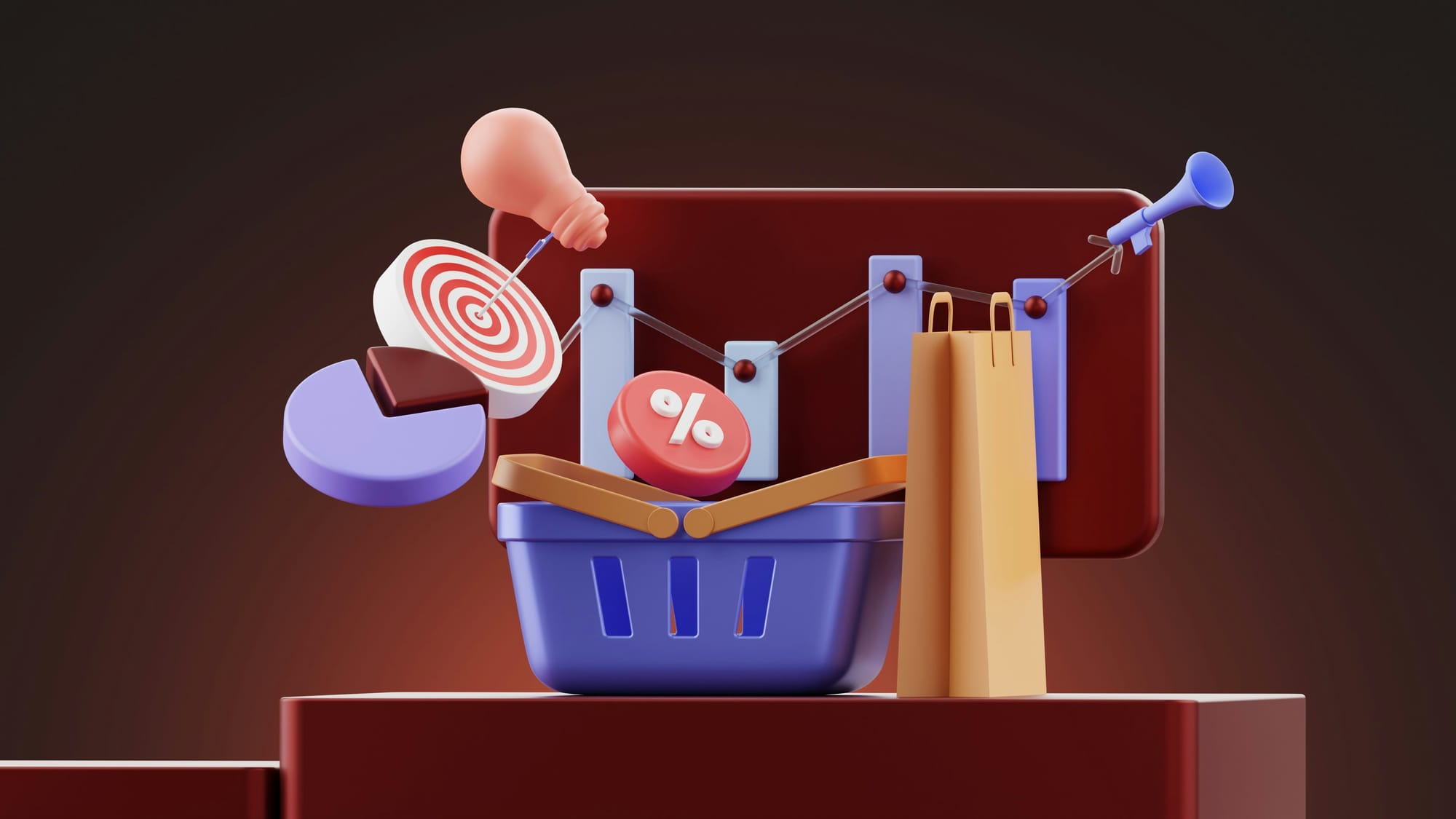Ecommerce personalization examples - how to create a personalized shopping experience that converts
In the crowded world of ecommerce, standing out from the competition is more important than ever. One of the most effective ways to differentiate your online store is through personalized ecommerce experiences that cater to individual customer preferences and behaviors. By leveraging data-driven insights, ecommerce businesses can create tailored shopping experiences that resonate with customers, enhance engagement, and drive sales.
In this article, we’ll explore some ecommerce personalization examples that demonstrate how top brands are optimizing their strategies and provide actionable tips to implement ecommerce product personalization in your business.
Why personalization matters in ecommerce
Personalization is no longer just a nice-to-have - it’s a must-have. Consumers expect a personalized ecommerce experience that makes them feel understood and valued. According to recent studies, 80% of shoppers are more likely to buy from a company that offers personalized experiences, and personalized product recommendations can increase sales by up to 20%.
Personalization goes beyond addressing customers by name in emails. It’s about delivering relevant content, products, and offers at every touchpoint of the customer journey, from product recommendations on your homepage to personalized emails and targeted promotions.
Ecommerce personalization examples that drive results
Here are some standout ecommerce personalization examples that showcase how leading brands are delivering personalized experiences that boost engagement and conversions.
1. Personalized product recommendations
One of the most common and effective forms of ecommerce product personalization is recommending products based on browsing history, past purchases, or similar user behavior. Amazon is a pioneer in this approach and uses sophisticated algorithms to display “Customers who bought this item also bought” and “Recommended for you” sections on product pages.
These personalized suggestions not only enhance the shopping experience but also increase average order value (AOV) by encouraging cross-selling and upselling. To implement this on your site, consider using AI-powered recommendation engines that analyze user behavior and suggest relevant products in real-time.
2. Dynamic content on homepages
Leading ecommerce sites like ASOS and Nordstrom personalize their homepages based on user behavior, location, and demographics. For example, a returning customer might see featured items they’ve previously browsed or products that match their style preferences.
Dynamic content helps make the shopping experience feel more relevant and engaging, increasing the chances that users will continue browsing and make a purchase. To achieve this you can use tools like Optimizely or Dynamic Yield, which enable you to serve different content variations based on user data.
3. Personalized emails and retargeting campaigns
Email remains a powerful tool for personalized ecommerce marketing. Brands like Sephora use personalized emails to re-engage customers, sending targeted messages that include product recommendations, special discounts, and restock alerts based on past purchases.
Retargeting campaigns are another effective method of personalization. By tracking user behavior on your site, you can serve personalized ads on social media and other platforms, reminding customers of items they’ve viewed or left in their cart. This keeps your brand top-of-mind and encourages users to complete their purchase.
4. Ecommerce product personalization options
Beyond recommending products, some brands take personalization to the next level by offering customization options directly on their product pages. Nike’s “Nike By You” allows customers to design their own shoes, choosing colors, materials, and adding personal text. Similarly, companies like Pandora and Mixbook offer personalized jewelry and photo books that let customers create one-of-a-kind products.
These ecommerce product personalization options empower customers to tailor products to their liking, creating a unique shopping experience that fosters brand loyalty.
5. Location-based personalization
Personalizing the shopping experience based on the user’s location is another effective strategy. For example, Starbucks’ mobile app personalizes product suggestions and offers based on the local weather. On a hot day, customers are more likely to see suggestions for cold drinks, while on a chilly day, hot beverages are highlighted.
This type of personalization not only makes the shopping experience more relevant but also drives impulse purchases based on current conditions. You can implement location-based personalization on your ecommerce site with ConversionWax by using geolocation data to display local store availability, estimated shipping times, or region-specific promotions.
6. Loyalty programs with personalized rewards
Loyalty programs are an excellent way to create a personalized ecommerce experience that keeps customers coming back. Brands like Ulta Beauty and Starbucks personalize their rewards programs, offering customers tailored discounts and perks based on their shopping habits.
For instance, Ulta’s rewards program offers points that can be redeemed on future purchases, with personalized offers that reflect each customer’s preferred products. This approach not only enhances the customer experience but also increases repeat purchases and brand loyalty.
How to implement ecommerce personalization in your business
Here are some actionable steps you can take to start incorporating ecommerce personalization examples into your business
- Collect and analyze data. To deliver personalized experiences, you need to gather data on customer behavior, preferences, and demographics. Use analytics tools to track user interactions and identify patterns.
- Segment your audience. Divide your customers into segments based on their behavior, purchase history, or preferences. This allows you to tailor your messaging and product recommendations more effectively.
- Use AI and machine learning tools. Invest in AI-driven personalization tools that can analyze data in real-time and automatically adjust content, recommendations, and offers based on individual user behavior.
- Test and optimize. Continuously test different personalization strategies to see what works best for your audience. Use A/B testing to refine your approach and ensure you’re delivering the most relevant experiences.
Start crafting!
Creating a personalized ecommerce experience is no longer optional - it’s a key differentiator that can drive customer loyalty, increase conversion rates, and boost sales. By incorporating these ecommerce personalization examples into your strategy, you can offer a tailored shopping experience that delights customers and keeps them coming back for more.
Whether through personalized product recommendations, dynamic content, or location-based offers, the goal is to make every interaction feel unique and relevant. Start by leveraging data, using the right tools, and continuously optimizing your approach to build a personalized ecommerce experience that stands out in today’s competitive market.
Start your journey today with ConversionWax. Access your free trial here.
-

10 Proven Ways Personalization Boosts E-Commerce Conversion Rates
-

How to increase your website sales
-

Mastering ecommerce product page optimization
-

Ecommerce content optimization - strategies to drive conversions
-

Product page SEO best practices
-

Create a winning ecommerce strategy
-

Ecommerce optimization - strategies to boost your online store's performance
-

Ecommerce best practices - how to enhance performance, attract customers, and grow sales
-

How to increase online sales - proven strategies to boost your business
-

How to market a product online - proven strategies for success

